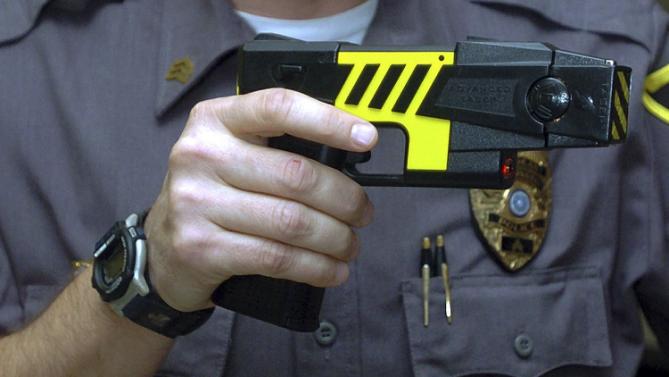Racial disparities in Connecticut stun gun use
By Dave Collins
THE ASSOCIATED PRESS

HARTFORD, Conn. _ Officers last year fired stun guns at blacks and Hispanics at a higher rate than at white suspects, and warned but didn’t fire at white suspects at a higher rate than they did blacks or Hispanics, according to preliminary data from the first U.S. state to require police to document their use of stun guns.
The new data from Connecticut come as police across the U.S. face increasing scrutiny over their use of force, in the wake of high-profile fatal shootings by officers, especially of black suspects. Although stun guns have been billed as non-lethal alternatives to guns, they have resulted in deaths, and reliable information on how police use them has been lacking.
Amnesty International has reported that at least 540 people in the United States died after being shocked with stun guns from 2001 to 2012.
Among the Connecticut figures revealed in the raw data, obtained and reviewed by The Associated Press ahead of an official report expected in coming weeks:
_ Police reported 641 incidents involving stun guns last year, including 437 actual firings and 204 threats of use.
_ Thirty per cent of the people involved in the overall incidents were black and 21 per cent were Hispanic.
_ Within the overall number of stun gun incidents, officers fired at them 60 per cent of the time in cases involving whites, 80 per cent of the time in cases involving blacks and 69 per cent of the time in cases involving Hispanics.
_ Officers warned about firing but did not do so at white suspects 40 per cent of the time, black suspects 20 per cent of the time and Hispanic suspects 31 per cent of the time.
_ When state and municipal officers fired their stun guns in 2015, 43 per cent of the suspects were white, 35 per cent were black and 21 per cent were Hispanic. But when officers only threatened to use stun guns and did not fire them, 61 per cent of the subjects were white, 19 per cent were black and 20 per cent were Hispanic.
A 2014 law made Connecticut the first state to require all police departments to report every instance in which an officer discharges or threatens to use a stun gun. Researchers at Central Connecticut State University are reviewing the data and will submit a report with analysis to state officials, possibly by the end of February.
The figures don’t include data from several smaller towns that didn’t submit reports. Researchers have contacted them and are awaiting responses.
State officials cautioned against making quick conclusions about the figures, saying they have just begun to analyze them after the Jan. 15 deadline for police departments to submit the reports. Civil liberties advocates also said that the data appear to show racial disparities on the surface, but that more analysis is needed.
“It seems like in the cases where it was threatened but not used, there were far more white people involved,” said Michael Lawlor, state undersecretary for criminal justice policy and planning. “Why that is and whether there is some other explanation, we’re going to go through the data and try to figure it out.”
The Connecticut data showed one death from stun guns last year, in the community of Branford, researchers said. Media reports and the American Civil Liberties Union of Connecticut show two deaths in the state _ the one in Branford and an additional one in Hartford. The reason for the discrepancy wasn’t immediately clear.
Among injuries, the vast majority were from removal of the prongs that deliver the shock, researchers said.
In Connecticut, 17 people have died since 2005 after police hit them with stun guns, 12 of them minorities, according to the ACLU.
Of the new data on stun gun use, David McGuire, legislative and policy director for the Connecticut ACLU, called the statistics “alarming.”
“I think this data will be helpful for policy makers and police chiefs in Connecticut to get a handle on the issue,” he said.




